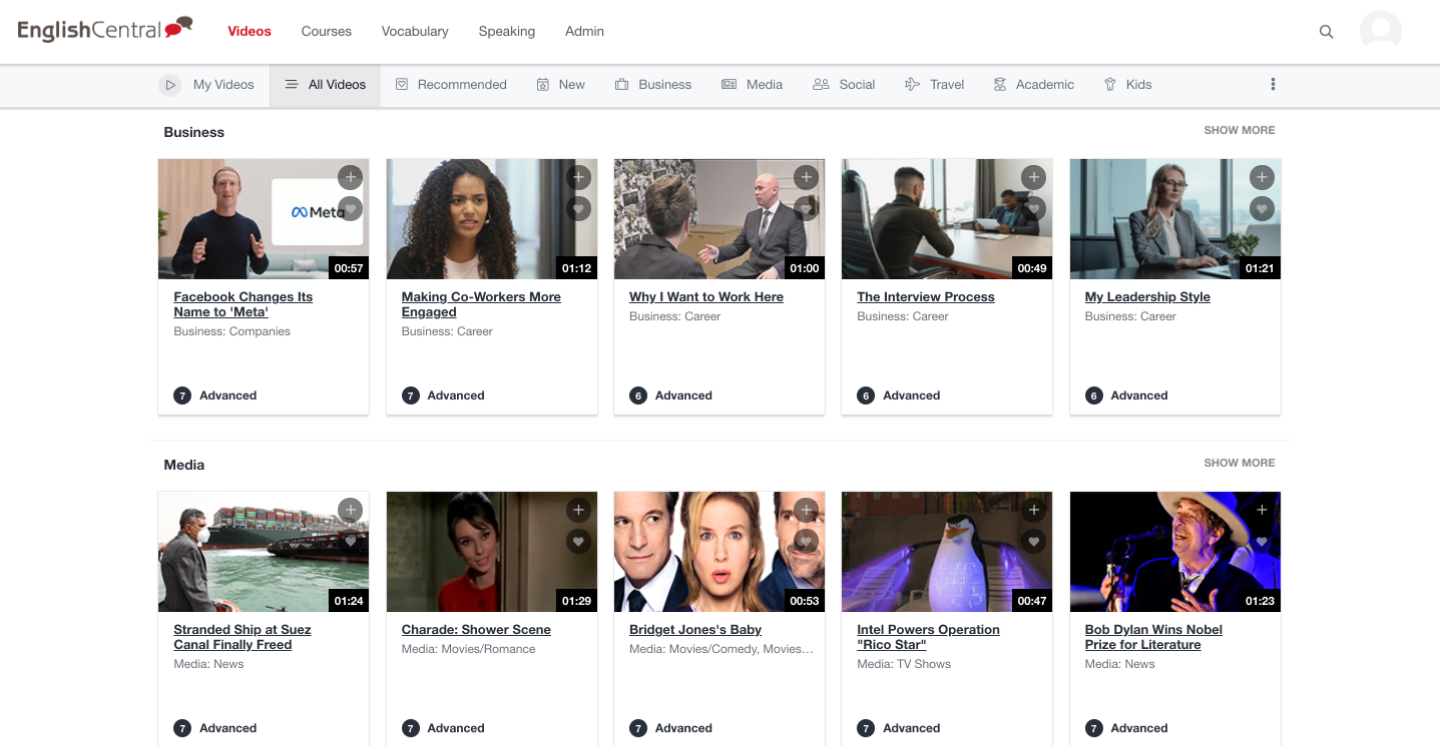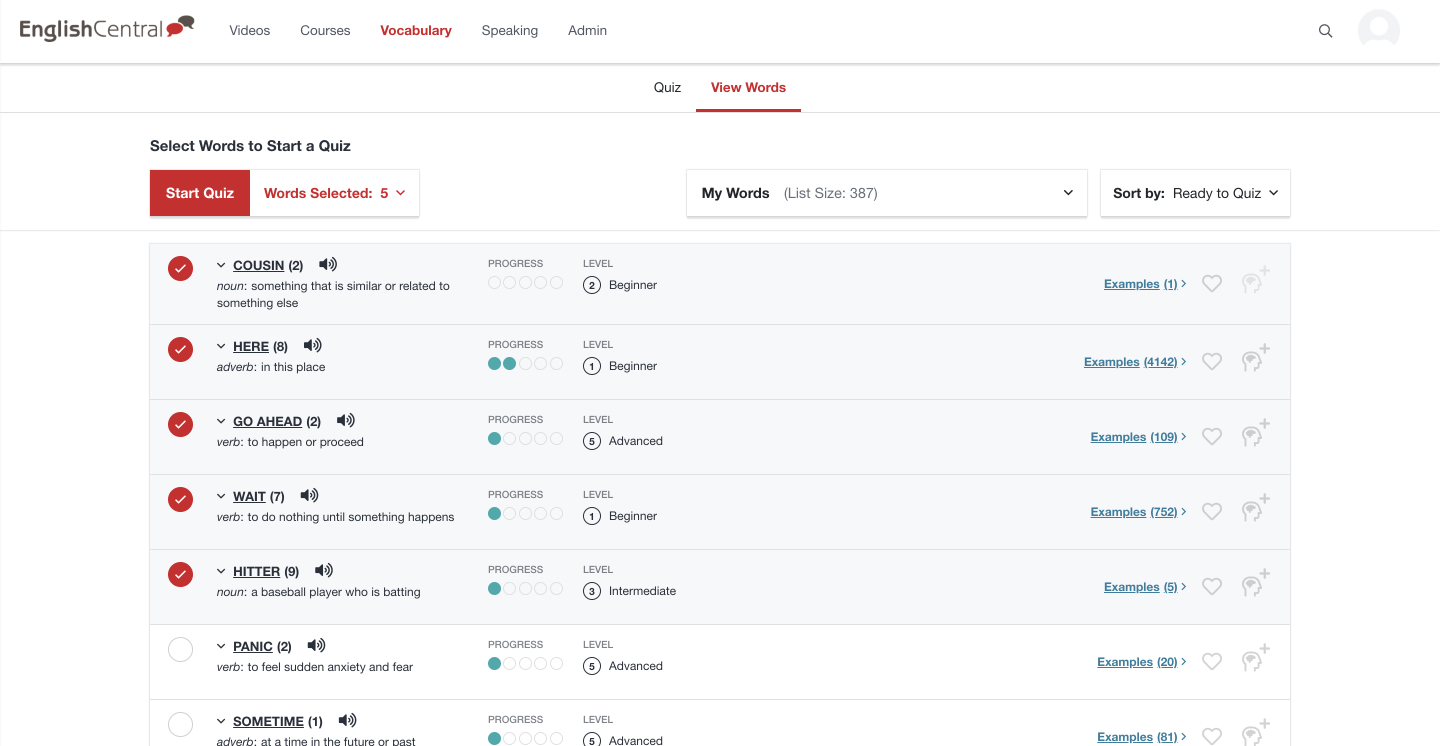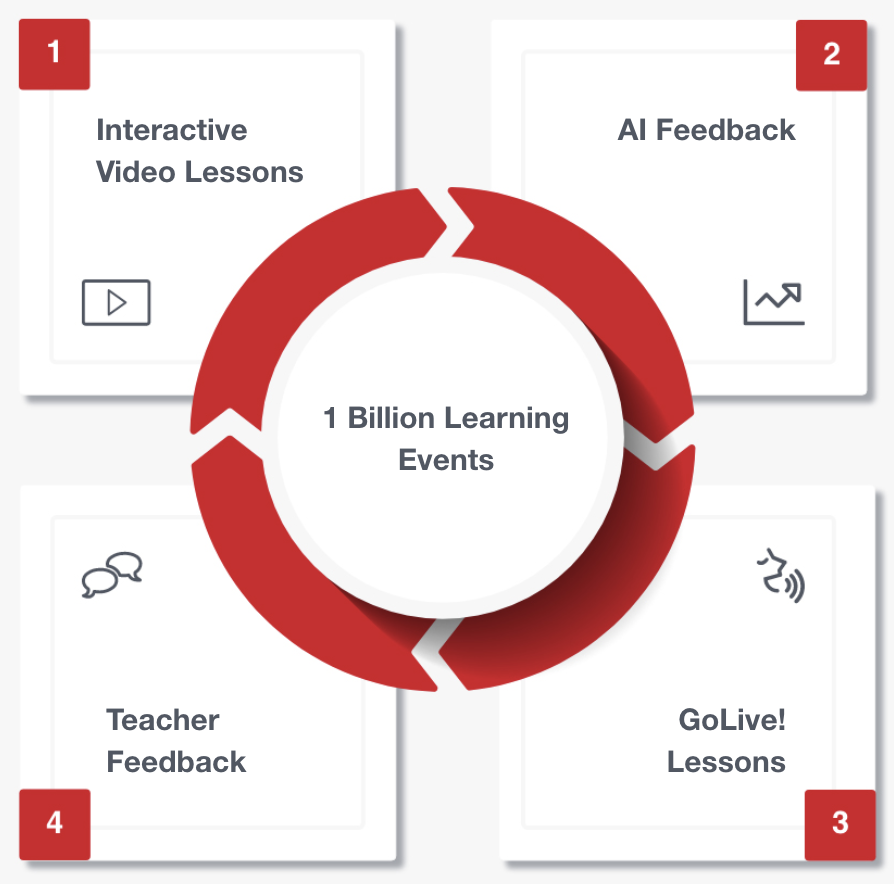EnglishCentral Launches Comprehensive Vocabulary Learning System


EnglishCentral’s Comprehensive Vocabulary Learning System
Now includes study apps, progress tests and new assessment tests
Fukuoka, Japan, November 14, 2022. EnglishCentral, a global leader in online conversational English learning, released an update to its comprehensive vocabulary learning system at this year’s Japanese Association of Language Teachers annual conference (JALT) held in Fukuoka, Japan. The update includes a new Vocabulary Level Test (VLT), to assess students’ levels at the beginning of study on EnglishCentral and then assess their progress, against internationally recognized standards such as the CEFR, at the end of their study on EnglishCentral.

EnglishCentral’s Comprehensive Vocabulary Learning System
Now includes study apps, progress tests and new assessment tests
Japan, 14th November 2022. EnglishCentral, the leading provider of online English learning, has released a comprehensive vocabulary learning system at this year’s Japanese Association of Language Teachers annual conference (JALT) held in Nagoya, Japan.


Learn words in-context
The core of EnglishCentral’s vocabulary learning system is a corpus of over 20,000 authentic English learning videos, each word of which has been semantically tagged with its in-context meaning sense, and which also supports multi-words and collocations.

Learn words in-context
The core of EnglishCentral’s vocabulary learning system is a corpus of over 20,000 authentic English learning videos, each word of which has been semantically tagged with its in-context meaning sense, and which also supports multi-words and collocations.

Wordlists ensure coverage of high-frequency words
The system includes research-supported high-frequency wordlists, which cover 92%* of words students are likely to encounter in an average newspaper, book, magazine, TV show, movie or daily speech. The system also supports speciality wordlists.
General Vocab | Each level on EnglishCentral contains a high-frequency wordlist mapped to CEFR (A0 to C2). |
Academic Vocab | The 960 most common words in academic texts and lectures. |
TOEIC Vocab | The 1200 most common words that appear on the TOEIC exam. |
Business Vocab | The 1700 most common words for learners looking to master general business English situations. |
*Based on the New General Service List and other lists provided by Browne, C. & Culligan, B.

Wordlists ensure coverage of high-frequency words
The system includes research-supported high-frequency wordlists, which cover 92%* of words students are likely to encounter in an average newspaper, book, magazine, TV show, movie or daily speech. The system also supports speciality wordlists.
General Vocab | Each level on EnglishCentral contains a high-frequency wordlist mapped to CEFR (A0 to C2). |
Academic Vocab | The 960 most common words in academic texts and lectures. |
TOEIC Vocab | The 1200 most common words that appear on the TOEIC exam. |
Business Vocab | The 1700 most common words for learners looking to master general business English situations. |
*Based on the New General Service List and other lists provided by Browne, C. & Culligan, B.

Diagnostic Mode Optimized for Individual Learners
Unlike many vocab learning tools that demotivate students by repeatedly forcing them to learn words they already know, the EnglishCentral tools automatically mark words as known based on a diagnostic mode used when first introducing words to students to study.
Enforced Review Mode
Unlike other tools which encourage students to learn words just once for a test, the EnglishCentral system forces students to review their weak words 80% of the time they study.
Speaking & Other Modes
Includes a state-of-the-art “speaking recall” mode, powered by EnglishCentral’s IntelliSpeech SystemSM, which tests students’ ability to recall words correctly by speaking them in context. The system also supports multiple modes of increasing retrieval difficulty, including dictation, multiple-choice and typing, in each case with and without hints.


Multilingual Support
Supports eleven different L1 languages: Japanese, Chinese, Korean, Vietnamese, Arabic, Hebrew, Turkish, Spanish, Polish, Thai and Portuguese.
Placement, Progress & Assessment Tests
Students start with a placement test, mapped to CEFR levels. Then, weekly in-class vocabulary progress tests seamlessly tie outside of class study with in-class progress tests. The tests ensure students properly review, as each weekly progress test contains 50% review words, covering the full range of all past weeks. Finally, at the end of the course, students take an assessment test again mapped to CEFR levels to demonstrate their overall progress.

Placement, Progress & Assessment Tests
Students start with a placement test, mapped to CEFR levels. Then, weekly in-class vocabulary progress tests seamlessly tie outside of class study with in-class progress tests. The tests ensure students properly review, as each weekly progress test contains 50% review words, covering the full range of all past weeks. Finally, at the end of the course, students take an assessment test again mapped to CEFR levels to demonstrate their overall progress.

Teacher Tools
A full suite of teacher tools allows teachers to set weekly goals for students, track the number of words students study each week, view results of weekly progress tests and quickly identify students who are falling behind on their vocabulary study.

Teacher Tools
A full suite of teacher tools allows teachers to set weekly goals for students, track the number of words students study each week, view results of weekly progress tests and quickly identify students who are falling behind on their vocabulary study.

Contact Us
For more information or to try out EnglishCentral’s Vocabulary Learning System, contact us































 Learn/Quiz Progress
Learn/Quiz Progress


 Hello and Welcome! My name is Gordon Bateson.
Hello and Welcome! My name is Gordon Bateson.